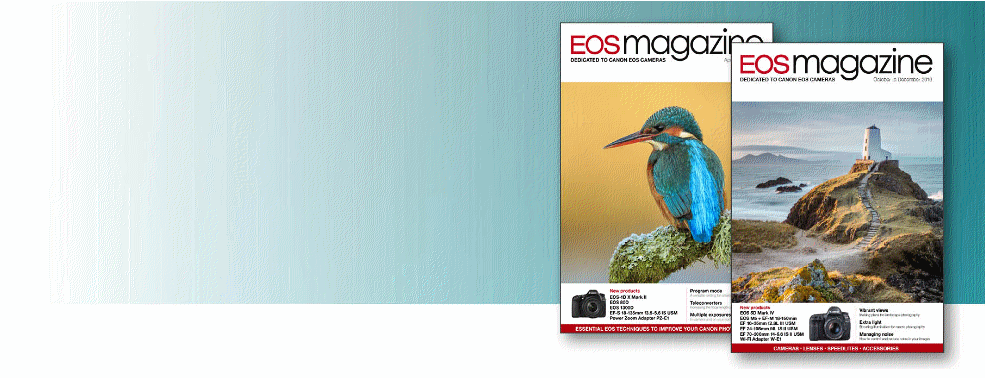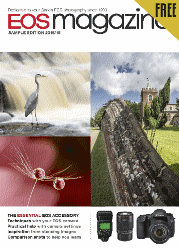
Slide copying
Do you have a large legacy of 35mm transparencies which never see the light of day? We look at using the Ohnar zoom slide duplicator for converting your transparencies into digital images.
Camera compatibility: All EOS cameras
Back in 2010 we created digital files from a series of old 35mm transparencies, held in our archive picture library. We tried two methods to convert the images; using a flatbed scanner and copying with an EOS camera. Here's our experience using an EOS 7D with the Ohnar zoom slide duplicator.
These duplicator units have been around for many years – originally introduced for copying slides to film. In the age of digital photography these units have taken on a new lease of life for creating digital files from slides and negatives.
The original Ohnar slide duplicator gave a 1:1 reproduction. This means that when used with a 35m camera it copies the entire 35mm slide. The next model had a zoom feature from 1x to 2x, useful when you want to select only part of the slide for copying onto film. With the introduction of APS-C size sensors the 1:1 reproduction is less useful, as APS-C is smaller than 35mm. Now the zoom range runs from 0.6x to 1.6x so that the 35mm slide can be reduced to fit the APS-C sensor using a 0.6x zoom.
Do you need a zoom for digital copying? Most of the time we copy the full area of a slide and crop if required. However if you know that you only want a selected part of the image, zooming in when you copy will make better use of your camera resolution.
T-mount fitting
The Ohnar units are self contained with a built-in lens – they fit directly to the camera without the need for a camera lens. Well, almost directly. They use the long-established T-mount system. 
The T-mount adaptor attaches to the camera body and the Ohnar unit screws into the adaptor. This also means that, with the appropriate adaptors, the same unit will fit different makes of camera.
Camera settings
Once the Ohnar unit is attached to your camera, the first thing to do is to rotate the slide holder at the front so that the sides are aligned with the viewfinder frame. If you don't do this, every slide you copy will be at an angle. The front can be locked in place once it is in the correct position.
 Left The slide was not positioned correctly in the slide holder and the black edges are showing. The copy was made at an angle, meaning there is extra work needed when processing the image file.
Left The slide was not positioned correctly in the slide holder and the black edges are showing. The copy was made at an angle, meaning there is extra work needed when processing the image file.
You can use the zoom if you want to select an area of the image. The slide can be moved around so that you are not restricted to the centre of the image. And that's about it. There are no other controls or buttons on the unit itself.
Focusing & exposure
So how do you focus and get the correct exposure? Well, the built-in lens is pre-focused. It also has a fixed aperture. The T-mount means that there is no exchange of data between the camera and the unit, so you need to use 'stop-down' metering. Switch the camera to Av mode – you will see that the aperture display is '00'. The exposure is now controlled by the shutter speed, which will be set automatically.
exchange of data between the camera and the unit, so you need to use 'stop-down' metering. Switch the camera to Av mode – you will see that the aperture display is '00'. The exposure is now controlled by the shutter speed, which will be set automatically.
The simplest way to shoot is by aiming the camera at the sky, ideally bright cloudy (NEVER directly at the sun). Set the white balance to Cloudy. ![]() Check the review image after shooting. If it is too light or too dark apply a little exposure compensation and try again.
Check the review image after shooting. If it is too light or too dark apply a little exposure compensation and try again.
Shooting at the sky can give good, but not always consistent, results. For more control, or working at night, use an off-camera Speedlite. Aim it directly at the white diffuser screen of the slide unit, ideally from a distance of about 0.5 metre. Use autoflash exposure, applying flash exposure compensation if the review images are too light or dark.
The built-in wireless flash feature of the 7D proved very useful – we were able to position our Speedlite 550EX in front of the camera, pointing towards the diffuser of the slide copier without the need for any trailing cables. With other cameras, the Canon Off Camera Shoe Cord OC-E3 is the accessory you need.
Raw or JPEG?
Is it best to shoot with a raw or JPEG quality setting? If you only have a few slides to copy and want to adjust each one on your computer, raw is best. It gives you more control over the image. But if you have hundreds or thousands of images to copy, use JPEG (Large/Fine will give you the best quality). This will give image files which can be used immediately without further processing.
Spend time on the first slide getting the results just right. Experiment with exposure compensation or flash exposure compensation to get the exposure perfect. Check the white balance. Once you are happy with the first image, you can shoot the rest with the same settings.
Speed
When testing the Ohnar unit against the scanner, one notable advantage of the Ohnar was its speed. Whilst the CanoScan 8800F took five minutes to scan four slides (at 2400dpi) plus additional time to save each file, with our hands free and EOS 7D mounted on a tripod we managed around six slides a minute.
Quality
We can't dispute that the flatbed scanner has the edge over the Ohnar duplicator. It gave slightly better definition and colour rendition. The variation in colour is easy to adjust using imaging software. However, unless you are going big and printing at A3+ sizes, you will not see much difference.

Above Slide shot using EOS 7D and Ohnar slide duplicator.

Above Slide scanned using CanoScan FS2400H
Other options
If you do not want to spend money on either a scanner or a slide duplicator and have a macro lens or lens and extension tube combination that will give you life-size images, you can shoot without any other accessories. Place the slide on a small lightbox or other diffused light source and position the camera and lens so that the 35mm frame fills the viewfinder. You will need to use a tripod to eliminate the risk of camera shake during the exposure.
It is important that no light falls onto the front of the slide during the exposure as this will degrade the image. Either work in a darkened room (switch off the lights beforehand) or build a tunnel of card or material to shield the front of the slide from light. If the slide is bigger than the lightbox, cut a mask from black card to cover the box, leaving an aperture just big enough for the slide frame. This will eliminate the risk of flare in the lens from the extraneous light. Good results are possible, with practice.
However we prefer the easier route of using a dedicated slide duplicator. It is simple to use and gives almost instant results, ideal if you have a large library of transparencies to convert.

Like this? Learn more
about your EOS system
Join EOS magazine today
from only £24.95 a year

We promise never to share your information


 Free sampler
Free sampler